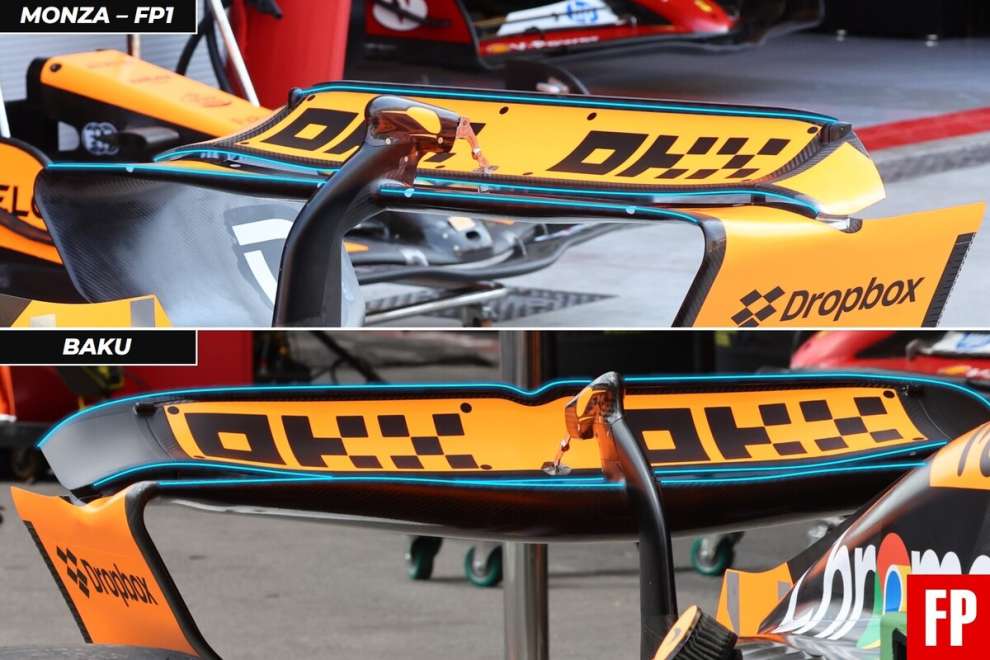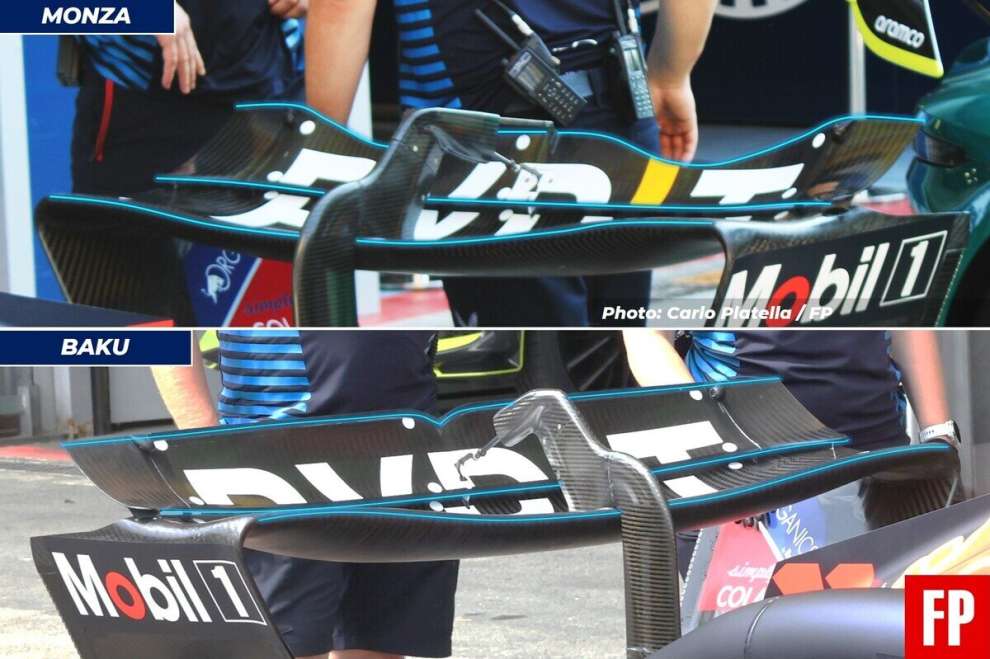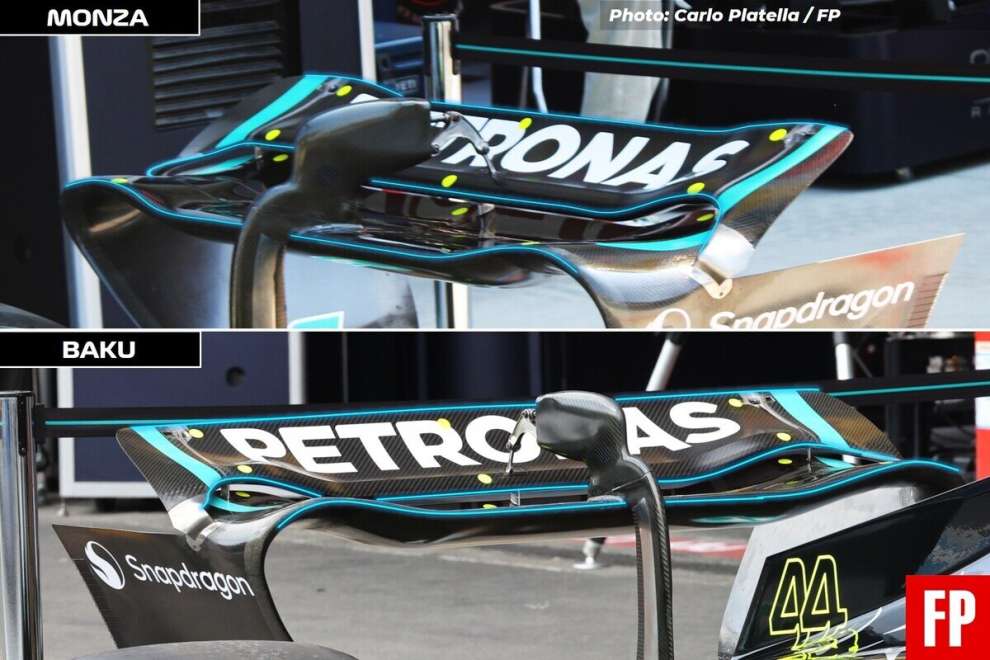By Carlo Platella
The Baku circuit is an atypical one, with mixed characteristics that make it a hybrid between Monte Carlo and Monza. The low-speed curves recall those of the Principality, while the straights push for comparison with the Italian racetrack. Overall the Azerbaijani track requires low aerodynamic load configurationsalthough more moderate than Monza, thanks to the almost 50 km/h less average speed per lap. Here are the teams’ choices.
Ferrari
The Maranello team abandons the straight-profile rear wing used in the victorious home race and which could be reused in Las Vegas. The SF-24 thus returns with the spoon wing that made its debut during the Belgian Grand Prix. It is an evolution of the previous medium-low downforce specification from the beginning of the season, also with a different fairing for the DRS actuator.
McLaren
At Monza the Woking team had brought a dedicated rear wing for the Temple of Speed, only to then set it aside after the first free practice session. The British team had thus switched to the Spa wing, who is now returning by car to Azerbaijan too. McLaren thus continues to exploit the new low-medium downforce package renewed in July between the races in England and Belgium.

Red Bull and Mercedes
World champions continue to be limited in their choice of winglets, having invested much of their development resources in other areas of the car. Red Bull continues to use the same medium-low load specification as at the beginning of the yearfirst seen in Jeddah. In Baku the wing returns to its Spa configuration, after having been temporarily adapted for the Monza race with a carved flap.


The situation is similar at Mercedes. The Silver Arrows also use the same low-downforce wing introduced in Jeddah, without any renewal during the summer season as Ferrari and McLaren did. Mirrors of different development strategies, also based on the resources invested in general updates rather than adaptations to individual tracks.
#Baku #Ferrari #McLaren #wings #Spa #Red #Bull #Jeddah